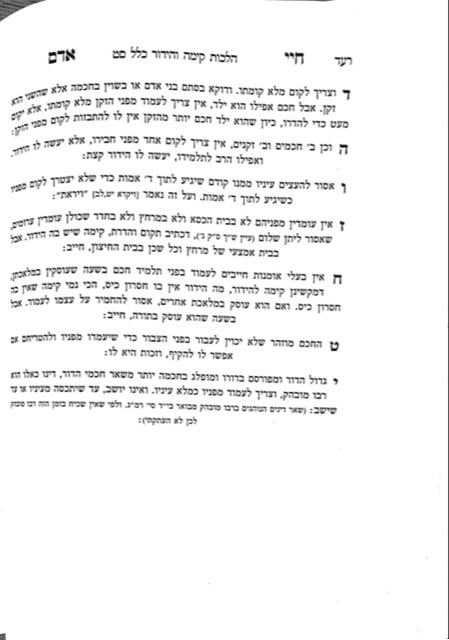We are discussing the halachos of kavod talmidei chachamim, specifically the halachos of hiddur. The Gemara in the tenth perek of Sanhedrin talks about someone known as an apikores. We are familiar with the term as used to describe a person who has incorrect belief systems about Hashem. The Gemara has another explanation, and says it is a person who is mevazeh a talmid chacham. According to this explanation, the apikores demonstrates that they do not have the value system nor respect for the Torah or Hashem, because they are being mevazeh a person who embodies everything that the Torah represents, yet the apikores is mevazeh him. This is equivalent to being kofer b’ikar, chas veshalom.
Rav Hirsch writes that respect is a necessary component of the mesorah. A person only accepts ideas and ideologies from a person who they respect.
The Gemara adds that, according to another opinion, a person who is mevazeh their friend in the presence of a talmid chacham is also called an apikores. Part of the kavod of a talmid chacham is that when standing in front of a person of statue, you stand in front of them with respect and are embarrassed to do actions which are inappropriate and lowly in their presence. One should carry themselves with yirah and awe in the presence a talmid chacham, and when they do not, they are undermining their respect for the statue which a talmid chacham deserves.
The Gemara elsewhere mentions that if a person does an action which is repulsive in the presence of a talmid chacham, they transgress the issur of not showing hiddur to the talmid chacham. Even though they are not being mevazeh the talmid chacham directly, they are acting in a way which is inappropriate in the presence of a talmid chacham.
The first time one meets a talmid chacham, it is much easier to have that awe. As a person becomes more familiar with a talmid chacham, it can become harder to maintain that level of awe. It is appropriate for the rebbe to be mochel the talmidim and not be upset, in order to avoid causing punishment to his talmidim. Nevertheless, it does not relieve the talmid from the responsibility to be as careful as possible in the presence of a rebbe.
In the upcoming shiurim, we will define the terms rebbe and seivah.
Summary
Another component of hiddur is respecting the talmid chacham and avoiding actions which are disrespectful or repulsive to the talmid chacham.



